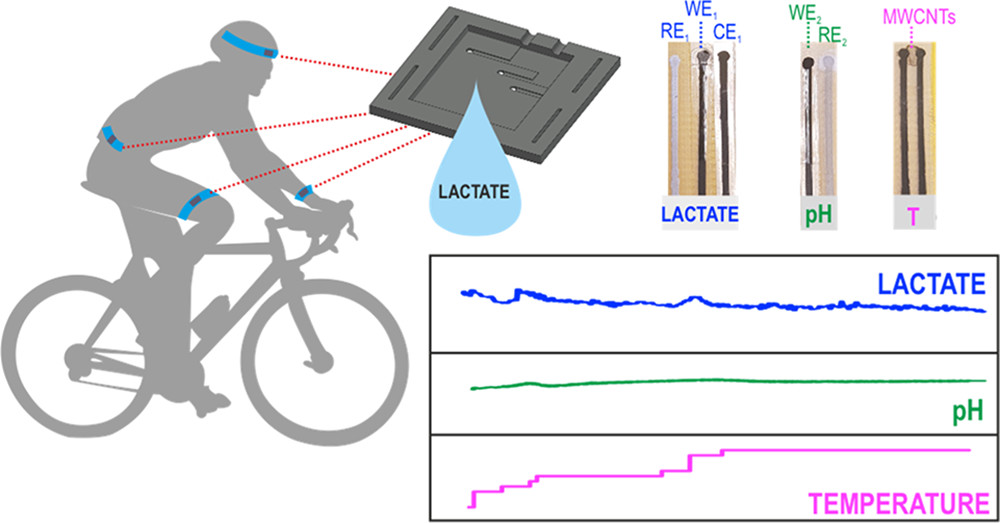In the realm of cycling, Lactate Testing in Cycling has traditionally been confined to elite riders or individuals with ample resources, willing to endure lab sessions involving needles and meticulous examination.
However, an intriguing shift is underway, propelling Lactate Testing in Cycling into the realm of biosensors that are more accessible and adaptable to real-world cycling conditions, departing from the confines of a laboratory setting.
Redefining Performance Monitoring: Lactate Testing in Cycling’s Evolution
Is this emerging technology poised to surpass the utility of heart rate monitors, power meters, or continuous glucose monitors? The answer, as stated by several various specialists, is an unequivocal yes. Yet, this very promise has led to swift action from regulatory bodies like the UCI, already having taken steps to prohibit their use in racing circuits.
The allure lies in the prospect of continuous blood lactate monitoring, affording riders a precise understanding of their exertion levels.
It enables them to fine-tune their efforts, particularly in sustaining endurance pace within Zone 2, a revelation highlighted by esteemed cycling physiology expert Iñigo San Millán. San Millán, renowned for his Zone 2 training paradigm and collaborations with riders like Tadej Pogačar of UAE Team Emirates, champions the transformative potential of such biosensors in revolutionizing training methodologies and race strategies.
Must Read CGMs in noncritical care hospitals optimizes glycemic control
A breakthrough study in 2022 underscored the significance of real-time lactate data during exercise, emphasizing its role in modulating training intensity to optimize athlete performance.
By delineating threshold zones based on blood lactate levels, akin to heart rate or power zones but rooted in internal biological metrics, riders gain unprecedented precision in tailoring their training regimens.
This accuracy enables them to discern the exact moment they transition from endurance to higher intensity zones, empowering them to conserve energy strategically.
The Parallels with Continuous Glucose Monitoring
Comparable to the advantages of a continuous glucose monitor (CGM), which forewarns cyclists of plummeting blood glucose levels, continuous Lactate Testing in Cycling acts as a preemptive indicator, alerting riders as they approach the threshold of Zone 2.
This advance notification enables riders to moderate their pace effectively, preventing inadvertent shifts beyond the desired zone.
Don’t miss the Guide about Wegovy Dosage Guide: The Best Way For Weight Loss
However, similar to CGMs, the utilization of continuous Lactate Testing in Cycling is presently barred by the UCI during competitive races, stipulated under rule 1.3.006bis. Nevertheless, their applicability in training sessions, akin to CGMs providing valuable insights ahead of race days, remains undeniable.
The distinction emerges in their utility: while Lactate Testing in Cycling facilitates smarter training decisions, CGMs offer real-time aid during racing scenarios. Please fill out the form if you or a friend would like more information on CGMs
Advancements and Future Prospects
The pursuit of non-invasive or minimally invasive continuous lactate monitors has persisted, with ongoing endeavors to develop commercially viable solutions. Despite promising advancements, such as bloodless sensors exhibiting efficacy, sustained functionality over extended durations remains a challenge.
Moreover, the quest for a comprehensive biosensor capable of simultaneously monitoring lactate, glucose, and even alcohol—resembling a standard CGM—signals a futuristic approach to health monitoring during daily activities.
Joseph Wang, director of a center at UC San Diego focusing on such advancements, envisions these sensors as a “complete lab on the skin,” revolutionizing health and wellness monitoring during daily routines.
Also, read about Lung Dendritic-Cell Metabolism
While these revolutionary devices are not yet commercially available, the trajectory mirrors the meteoric rise of CGM devices, hinting at an imminent arrival of continuous Lactate Testing in Cycling for public consumption.
Several companies are actively engaged in their development, signaling a forthcoming era where such cutting-edge technology may soon become accessible to cyclists and fitness enthusiasts alike.


